
![]() See Bahasa Indonesia translation
See Bahasa Indonesia translation
102nd Edition : May 2022
Key Points
- Foot & Mouth vaccine is desperately needed in Indonesia to prevent catastrophe.
- Continuing to import Australian cattle into Indonesia makes no sense until adequate vaccine supplies are available to protect them immediately on arrival.
Indonesia : Slaughter Steers AUD $5.19/kg live weight (Rp10,600 = $1AUD)
The cattle markets in Indonesia are understandably in turmoil as a result of the rapidly spreading Foot and Mouth Disease (FMD) epidemic. I will use Rp55,000 per kg live weight as my indicator rate for the end of May but this only refers to imported slaughter steers ex feedlot which are free of FMD due to the extreme biosecurity measures established to keep the virus out of their facilities. I expect that by the time this report is published in the second week of June the price at the feedlot will be in rapid decline. Prices in the FMD infected areas of the domestic cattle population are reported to be down to as low as Rp15,000 per kg live weight as panic has set in all along the supply chain from producers to abattoirs to government agencies to meat traders and the consuming public.
Indonesia is now in the most dangerous phase of the epidemic which is the time between the emergence of the disease across the country in a herd with zero immunity and the delivery of suitable vaccines to a majority of the cattle population (and sheep, goats, buffalo, pigs and Bali cattle). FMD vaccines are extremely effective in controlling the disease and preventing clinical signs so once the vaccines are administered to the bulk of the population, the animal production losses are minimal and the strategy is then changed to eradication where the costs tend to be on the government side more that the industry.
Map of areas of Indonesia affected by FMD in late May. The disease has spread very quickly to infect the three largest islands and Lombok. Bali is still free at this time.
Red areas have confirmed FMD cases. Yellow areas have suspect cases. Green areas have no reported cases.
During this period with rapidly spreading infection and no vaccine, the costs to the industry will be staggering. As stated above, the value of animals plummets as panic selling sets in. Movement of livestock becomes heavily restricted with the various animal health agencies, the police and even the army often operating on different sets of regulations creating confusion and disruption to the flow of animals to slaughter facilities. Cattle owners with healthy fat stock want to get them slaughtered before they become infected (and potentially worthless), but abattoirs are overwhelmed by emergency slaughter of infected stock. Emergency slaughter will also be taking place on farm where animals are unable to be moved to abattoirs with these additional meat supplies being delivered to already oversupplied retail wet markets.
A significant proportion of small holders stand to lose one of their “average” of 2 cows each which represents a massive reduction in their personal wealth as the cows are often as valuable as the farmer’s house. Large lot feeders are in a similar position but just on a much larger scale. Elsewhere in the world when unvaccinated animals are infected about 30% of the herd can be clinically affected with foot and mouth lesions. This generally means that they stop eating, have difficulty walking and must lay down on their side to reduce the pain in their feet. 300kg feeders will have a fair chance of recovery but in the case of heavy animals, infection usually leads to recumbency, rapid weight loss, pressure sores and secondary infections including pneumonia. As these large, heavy animals are reluctant to walk even a few feet to the water trough they are not in a position to be trucked to the abattoir. Imagine a feedlot with 30% of 1,000 head of heavy ox laying on their side, unable or unwilling to stand.
I am not trying to be an alarmist or to overstate the risks involved here but I do know that the only chance for a quick resolution of this epidemic is the rapid application of appropriate vaccines. And from the information I am getting, it appears that the government is in no hurry for vaccine importation and distribution. Below is a very brief summary of the 10 steps required by the Ministry of Agriculture before a private cattle owner/company is able to obtain imported vaccine. I am not sure if these requirements relate to FMD or Lumpy Skin Disease (LSD) or both.
- The livestock owner/company must submit an application to their industry association including data such as numbers, vets, storage, disease status etc.
- The industry association then makes a further summary of the information and forwards it to the Provincial government agency
- The Provincial agency checks the data and if they are satisfied they provide a recommendation for vaccine supply back to the industry association.
- The industry association then sends this provincial government recommendation to the National veterinary authorities for their consideration.
- If the national authorities approve the application then they send approval advice including number of vaccines allowed to be sourced back to the industry association.
- Industry association then advises an approved vaccine importer that they have approval to source imported product and establish transaction details
- The vaccine importers then make application to the Ministry of Agriculture livestock service department (DGLS) for import permits for the approved volume of vaccine.
- The DGLS then issues an import permit if they find everything is in order
- The importer then sources the vaccine (from overseas) and once in the country, it distributes the product according to the relevant permits etc
- The Provincial government animal health agencies then supervise the implementation of vaccination at the appropriate farm/feedlot sites according to the permit conditions and report back to the national animal health recording system (SKHNAS).
To work through this process may well take 3 to 6 months, possibly more.
Given this current 10-point process which, in my view will prevent timely vaccination, the disease is about to unleash a national animal health catastrophe.
This photo is from a social media video of FMD in a small local feedlot in East Java. The pain in this animal’s feet is forcing it to lay on its side. Considering it is probably about 400kg it will not be long before it has pressure sores, massive weight loss and secondary bacterial infections. Another animal can be seen laying on its side in the top right of the photo. This outcome is consistent with my experience of FMD outbreaks in heavy cattle in other parts of Asia.
Another photo from social media of heavy cattle with painful foot lesions.
FMD blisters on the teat of a dairy cow in East Java from social media.
Some of the information coming from a number of industry and government sources is suggesting that the clinical signs of the FMD are mild and that an uneventful recovery is the most common outcome of infection. This appears to relate to the fact that the average body weight of a large proportion of domestic beef cattle is relatively low. Mature cows will average about 330 kg with mature bulls at around 400kg. The smaller the animal, the less weight on their foot lesions and less damage to claws. This improves the chances that the claws don’t detach which then increases the likelihood of a slow but successful recovery. Heavy cattle are not so fortunate as the damage and pain in their feet is much greater leading to a much poorer outcome. This heavy category also includes large Friesian/Holstein dairy cows which often have body weights between 400 and 500 kg. These cows also suffer a very poor outcome as per heavy beef cattle. As seen in the photo above, FMD blisters on the teats combined with foot and mouth lesions put an to end their lactation. Without timely vaccine protection, the Indonesian dairy industry could lose a large proportion of its cow base and annual milk production during 2022.
In the last week of May the Jakarta press announced that the government plans to import 3 million doses of FMD vaccine (from France) in the middle of June. I certainly hope this is an accurate report but so far the public information on the progress of this disease and the government’s response has been inadequate and in some cases inaccurate and misleading. Three million doses will barely be enough to cover the active infection areas. 15 million doses is needed just to cover the cattle herd once, without considering the many millions of sheep, goats and pigs. At the same time, the national Veterinary Farma Centre (Pusvetma) is planning to manufacture FMD vaccine in Indonesia, but this may take several months before locally made product is freely available. Once again, information on the timing of the availability of this product is conflicting and misleading with some reporters claiming it will be ready in a matter of weeks. Unless the Pusvetma laboratories are already in possession of the complex technical equipment and technological capacities necessary to produce the latest FMD vaccines then the lead time to the first available local vaccines could be more like 6 months assuming the very large budget required to establish a modern vaccine facility is not a limiting factor.
A further complication to this situation is that the Muslim festival of Qurban is due to take place on Saturday 9th of July. During this festival of sacrifice, cattle, buffalo, sheep and goats are slaughtered with the meat being distributed to the poor. The numbers of cattle, sheep and goats slaughtered for the festival are huge with estimates across the nation of over 200,000 cattle and more than 1 million sheep and goats. This means that a very large number of stock will need to move from their current on-farm location to the place of slaughter which in the majority of cases will be near large population centres. The increased potential for the spread of disease is obvious. In addition, the Indonesian Ulema Council (MUI) has issued a Fatwa (religious stipulation) concerning the laws and guidelines for implementation of sacrifice during the outbreak of FMD. This ruling includes a statement that animals with mild FMD symptoms are acceptable for sacrifice while those with severe symptoms are not. Plenty of scope for further confusion and misinterpretation here.
As a result of FMD not being present in the country for about 40 years there is little knowledge in the public domain regarding the appropriate management of the disease and the safety of the meat from infected animals. The science is clear, infected animals present zero risk to human health but unfortunately many people have already expressed their opposition to eating the meat following the spread of ill-informed rumours on social media of humans contracting the disease from beef consumption.
When my Jakarta agent visited the markets at the end of May, I asked them to question the meat traders about any impact of FMD. Traders at the BSD market in western Jakarta advised that they had not seen any impacts of the disease and noted that their beef came from two well-known feedlots in the Jakarta area with cattle imported from Australia. Retail prices in this market were only very slightly less than last month which was the end of Ramadan. To the best of my knowledge, as of the end of the first week of June there were no known cases of FMD in feedlots holding Australian cattle. I have received reports of forced selling in the Bandung area where large numbers of dairy cows are being emergency slaughtered which is reducing the live animal and carcase prices although at this stage is doesn’t appear to have translated to collapsing retail prices.
Another frustrating aspect of the government information on the disease is that to date there has been no confirmation of the source of the FMD outbreak. The strain has been identified, presumably by the Pirbright reference laboratory in the UK. I am sure there is DNA technology available to confirm the origin of the virus just as we have seen over the last year or so with new Covid 19 outbreaks where it would take only a few days to confirm exactly where the virus had originated.
In my April report I noted that there was a huge disparity between the CIF price of Indian Buffalo Meat (IBM) and the Indonesian retail price. My agent from Jakarta reports that once again the price of IBM in the local supermarket remains at Rp129,000 per kg even through the peak selling periods of Ramadan and Lebaran are well passed. From last month’s report : “Assuming import costs for customs duties, taxes, financing, refrigeration, and logistics of say 30%, the cost for the product should be around Rp61,000 delivered to cold storage around Jakarta.” If that is the case then who is getting the Rp68,000 per kg margin?
IBM for sale in a supermarket in BSD City, Jakarta for Rp129,000 per kg. This photo was taken on the 29th of May 2022.
Lumpy Skin Disease (LSD) seems to have fallen off the radar since the arrival of FMD but it is certainly still present and spreading although there is little up to date information about the spread and the vaccination program as it has been totally overshadowed by FMD. I am aware that a significant number of vaccinations have been delivered through Sumatra but that is the extent of my knowledge to date. In terms of risk to the domestic herd, I would say that the potential damage from FMD is a 10 out of 10 catastrophe (prior to broad vaccine coverage) while the LSD outbreak will be a 5 out of 10 problem because all local cattle are closely managed and will be able to be given intensive care until they recover. See more photos at the bottom of this report on LSD.
A cow showing classical LSD lesions in Sumatra. Imagine what buffalo flies would do to a case like this in the northern Australian wet season.
Darwin feeder steer prices remained at the $4.80 mark at the end of May with feeder heifers selling for $4.60. During May 22,750 head were exported from Darwin to Indonesia. I am predicting that demand will fall dramatically in June as importers assess the risk of any new shipments becoming infected with FMD and do the sums on their potential losses. I also predict that this slowdown in demand will only last as long as vaccine is unavailable. As soon as adequate supplies of vaccine are waiting in the feedlot fridge to protect all the incoming feeders then it will once again be business as usual. This is the case in Vietnam where FMD is endemic and our cattle are constantly exposed but are routinely vaccinated within 24 hours of arrival with a second shot 1 week later. In fact, considering the probable decimation of the domestic herd through the combined effects of FMD and LSD I expect that demand for feeders will increase significantly to fill the gap left by large losses in the national herd. Remember that while LSD is a disease of cattle and buffalo only, FMD also affects sheep, goats and pigs so its impact on the full range of red meat supplies will be much greater.
Vietnam : Slaughter Steers AUD $5.00 / kg (VND16,800 to $1AUD)
No change in slaughter cattle prices again this month with the indicator rate still at D84,000 per kg live weight for steers and D86,000 for bulls. Despite some easing of prices in feeders in northern Australia, the rates for slaughter cattle in Queensland are still so high that I am advised that no shipments were exported from Townsville to Vietnam during May. 1,316 head were exported to Vietnam from the port of Darwin. This was possibly a part shipment combined with a second destination.
As noted above, Vietnam, along with the rest of our long-term customers in continental Southeast Asia have been infected with endemic FMD for most of their history. Despite this, the live export trade has functioned quite normally with the simple proviso that cattle were protected through vaccination immediately on arrival. The only problems over many decades of the trade have occurred when this vaccination was either not available or for some logistical reason the delivery was delayed and the cattle were exposed to the local infection before the vaccination was completed.
The failed, high profile Binh Ha cattle project is about to be resurrected with a combination of breeding cattle and a mix of agricultural enterprises. The cattle component will start with 1,000 imported breeding cows. One of the directors of the original failed project has reportedly been sentenced to life in prison after a long court case. Other members of the company and a number of BIDV bank staff involved in the loan process were also prosecuted.
The old Binh Ha project spent millions on infrastructure that was largely unused before the project closed down.
China : Slaughter Cattle AUD $7.40 / kg live weight (RMB 4.70 = 1AUD$)
Slaughter cattle prices have eased a little this month with the average in both Beijing and Shanghai down to Y34.8 per kg live weight. The Covid issues seem to be settling down with Shanghai now out of lockdown and Beijing not being affected to the same extent as the Shanghai outbreak allowing my reporters to collect their data without restrictions. Retail beef and pork were down a little in Beijing while both showed significant reductions in Shanghai.
China is endemic for FMD and LSD but this is managed through regular vaccination protocols. Large numbers of dairy cattle are exported to China from Australia and New Zealand and many other parts of the world every year and there are never any reports of outbreaks in imported stock.
Philippines : Slaughter Cattle AUD $3.43 / kg (Peso 37.3 to AUD$1)
No change once again in slaughter rates this month with the indicator rate remaining at Peso128 per kg live weight. Petrol prices remain high at P72 but don’t seem to have had much impact on the retail prices of beef, pork and chicken which are very similar to last month. The presidential election has been won by Mr Bongbong Marcos, son of former president Ferdinand Marcos who ruled from 1965 to 1986.
President Bongbong Marcos
Thailand : Slaughter Steers AUD $4.12 / kg (Baht 24.3 to $1AUD)
Slaughter and feeder cattle prices remained weak during May with the average still holding at THB100 per kg live weight. My agent reports that the market continues to be extremely quiet.
I visited Ethiopia in late May.
The country has about 65 million cattle, 50 million goats and 40 million sheep. I think I saw most of them on the road as we drove around the southwestern portion of the country. I have never seen stock densities like this anywhere else in the world. Donkey numbers are also astronomical.
There are so many livestock in the country that driving on rural roads is a very slow process.
Donkey carts are the main type of rural freight vehicles. Children appear to be the main donkey cart drivers.
“Fresh Corner” is an up-market chain of fresh fruit, vegetable, refrigerated meat, wine and specialty dry goods retail outlets located all around the capital Addis Ababa. Most of the products sold are produced by the same company.
The beef is all from bulls slaughtered from about 350 to 450 kg live weight. The average price of the beef cuts is Birr 550 per kg which translates to about AUD$14.80 per kg. As in Asia it is illegal to slaughter breeding females.
This company owns a western style abattoir which slaughters cattle, goats and sheep for both domestic consumption and export to the Persian Gulf states.
I was lucky enough to see an old case of Lumpy Skin Disease in a feedlot that I visited. It was the only animal out of about 100 that showed any signs. Some of the skin lumps were still discharging a yellow cheesy pus.
While the animal didn’t appear to be affected by these old lesions, I couldn’t help wondering what buffalo flies would do to discharging lumps like this during a northern Australian wet season.
May prices
These figures are converted to AUD$ from their respective currencies which are changing every day so the actual prices here are corrupted slightly by constant foreign exchange fluctuations. The AUD$ figures presented below should be regarded as reliable trends rather than exact individual prices. Where possible the meat cut used for pricing in the wet and supermarket is Knuckle / Round.
| Location | Date | Wet Market
AUD$/kg |
Super market
$/kg |
Broiler chicken
$/kg |
Live Steer
Slaughter Wt AUD$/kg |
| Indonesia | Dec 21 | 14.71 | 15.49 B13.04 | 4.21 | 4.80 |
| Rp10,200 | Jan 22 | 14.71 | 14.71 | 3.92 | 5.09 |
| Rp10,400 | Feb 22 | 14.42 | 14.33 | 3.65 | 5.05 |
| Rp10,500 | March 22 | 15.24 | 16.62 B9.38 | 3.62 | 5.05 |
| Rp10,600 | April 22 | 16.03 | 15.00 B12.17 | 4.25 | 5.38 |
| Rp10,600 | May 22 | 15.57 | 19.72 B12.17 | 3.77 | 5.19 |
| Philippines | Dec 21 | 14.64 | 15.47 | 3.59 | 3.73 |
| P36.5 | Jan 22 | 14.52 | 15.34 | 4.66 | 3.50 |
| P37.6 | Feb 22 | 14.10 | 14.89 | 4.52 | 3.40 |
| P38.3 | March 22 | 14.10 | 14.88 | 4.31 | 3.34 |
| P38.0 | April 22 | 14.21 | 15.00 | 4.47 | 3.37 |
| P37.3 | May 22 | 14.48 | 15.28 | NA | 3.43 |
| Thailand | Dec 21 | NA | NA | 2.88 | 4.58 |
| THB 23.2 | Jan 22 | 11.59 | NA | 3.43 | 4.72 |
| THB 23.7 | Feb 22 | 11.39 | NA | 3.59 | 4.64 |
| THB 24.5 | March 22 | 11.02 | NA | 3.67 | 4.08 |
| THB 24.85 | April 22 | 11.67 | NA | 3.42 | 4.02 |
| THB 24.3 | May 22 | NA | NA | NA | 4.12 |
| Vietnam | Dec 21 | NA | 16.75 | 4.91 | 5.03 |
| D16,200 | Jan 22 | 19.14 | 19.38 | 4.01 | 5.12 |
| D16,500 | Feb 22 | 18.79 | 16.18 | 7.09 | 5.09 |
| D16,800 | March 22 | 18.45 | 18.69 | 6.96 | 5.00 |
| D16,900 | April 22 | 18.34 | 18.58 | 6.92 | 4.97 |
| D16,800 | May 22 | 18.45 | 18.69 | 5.54 | 5.00 |
| China Beijing | Dec 21 | 20.63 | 23.00 | 4.22 | 7.94 |
| Y4.54 | Jan 22 | 21.15 | 21.72 | 4.23 | 7.75 |
| Y4.60 | Feb 22 | 20.89 | 21.43 | 4.17 | 7.65 |
| Y4.68 | March 22 | 20.51 | 20.94 | 4.44 | 7.56 |
| Y4.76 | April 22 | 20.17 | 20.59 | 4.79 | 7.48 |
| Y4.70 | May 22 | 19.57 | 20.85 | 4.00 | 7.40 |
| Shanghai | Dec 21 | 22.11 | 27.35 | 4.04 | 8.03 |
| Pork per kg | Jan 22 | 21.71 | 26.43 | 4.01 | 7.84 |
| Beijing Y22.8 | Feb 22 | 21.43 | 26.09 | 4.02 | 7.74 |
| ShanghaiY26.8 | March 22 | 21.06 | 25.64 | 3.97 | 7.56 |
| April 22 | 21.43 | 25.63 | 3.91 | 7.52 | |
| May 22 | 19.68 | 23.40 | 3.96 | 7.40 | |
| Darwin Feeder Steer | April 20
$2.80 |
May 20
$3.25 |
June 2020
$3.40 |
July 2020
$3.50 |
August 2020
$3.40 |
| Sept 2020
$3.45 |
October 2020
$3.90 |
Nov 2020
$4.00 |
Dec 2020
$4.00 |
Jan 21
$4.10 |
|
| Feb 21
$4.30 |
March 21
$4.30 |
April 21
$4.20 |
May 21
$4.10 |
June 21
$4.10 |
|
| July 21
$4.05 |
August 21
$4.25 |
Sept 21
$4.20 |
Oct 21
$4.30 |
November 21
$4.50 |
|
| December 21
$4.70 |
January 22
$5.35 |
February 22
$5.45 |
March 22
$5.53 |
April 22
$4.80 |
|
| May 22
$4.80 |





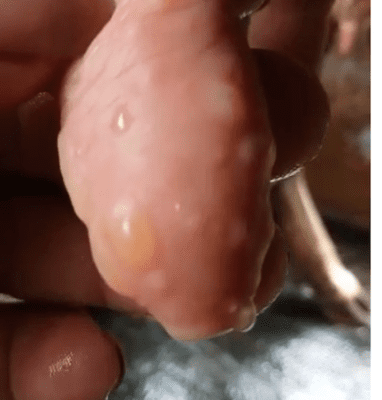
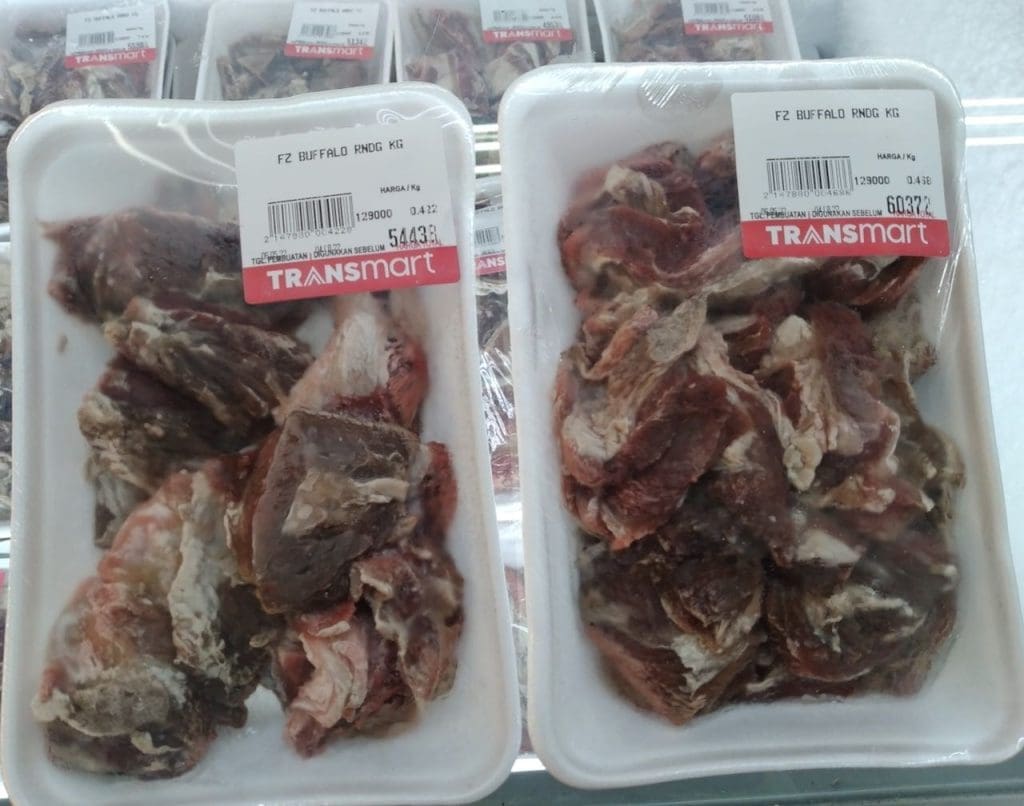
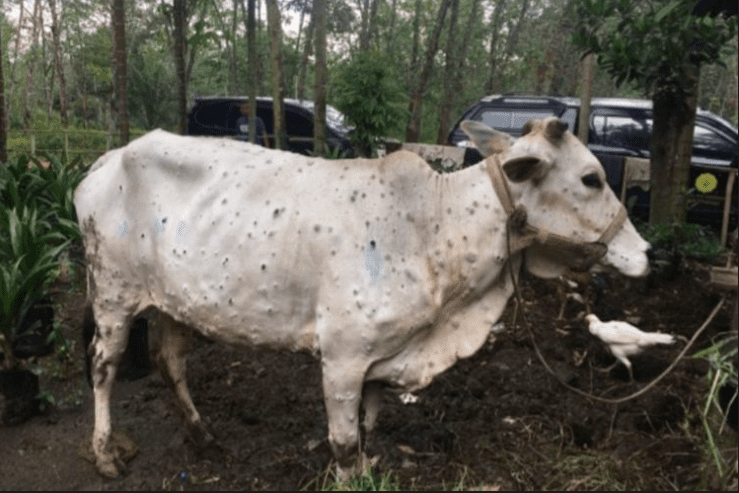




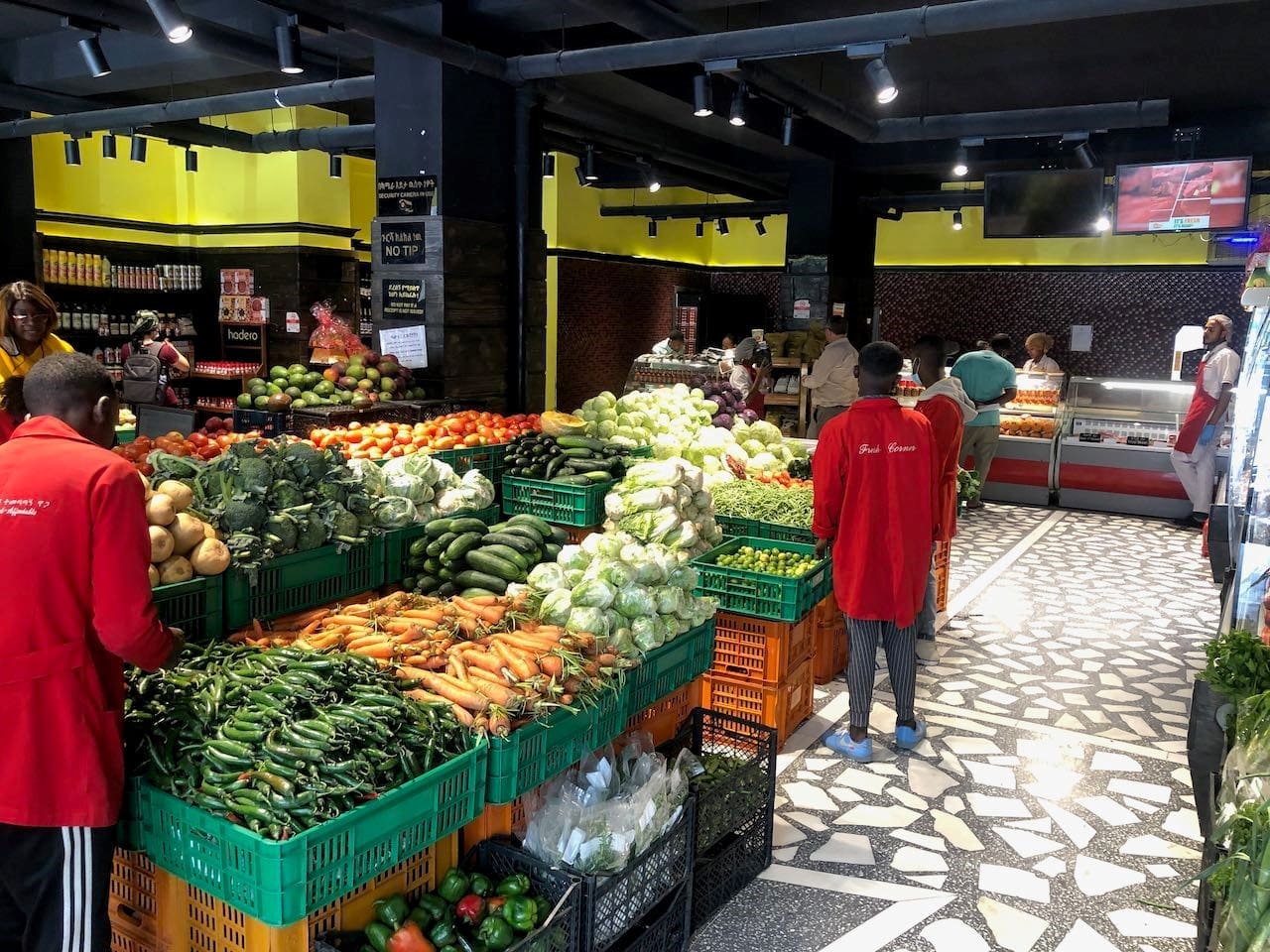
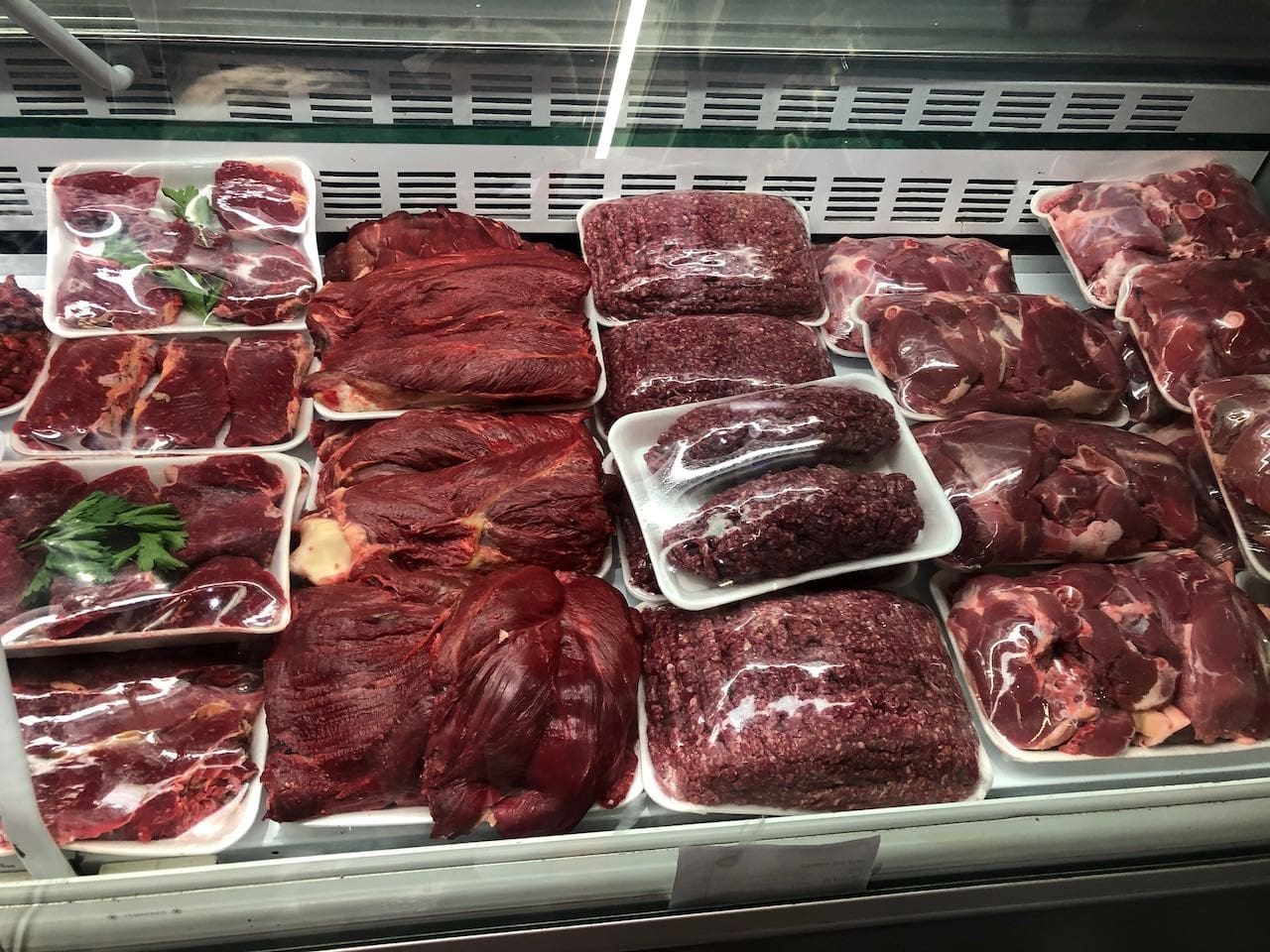
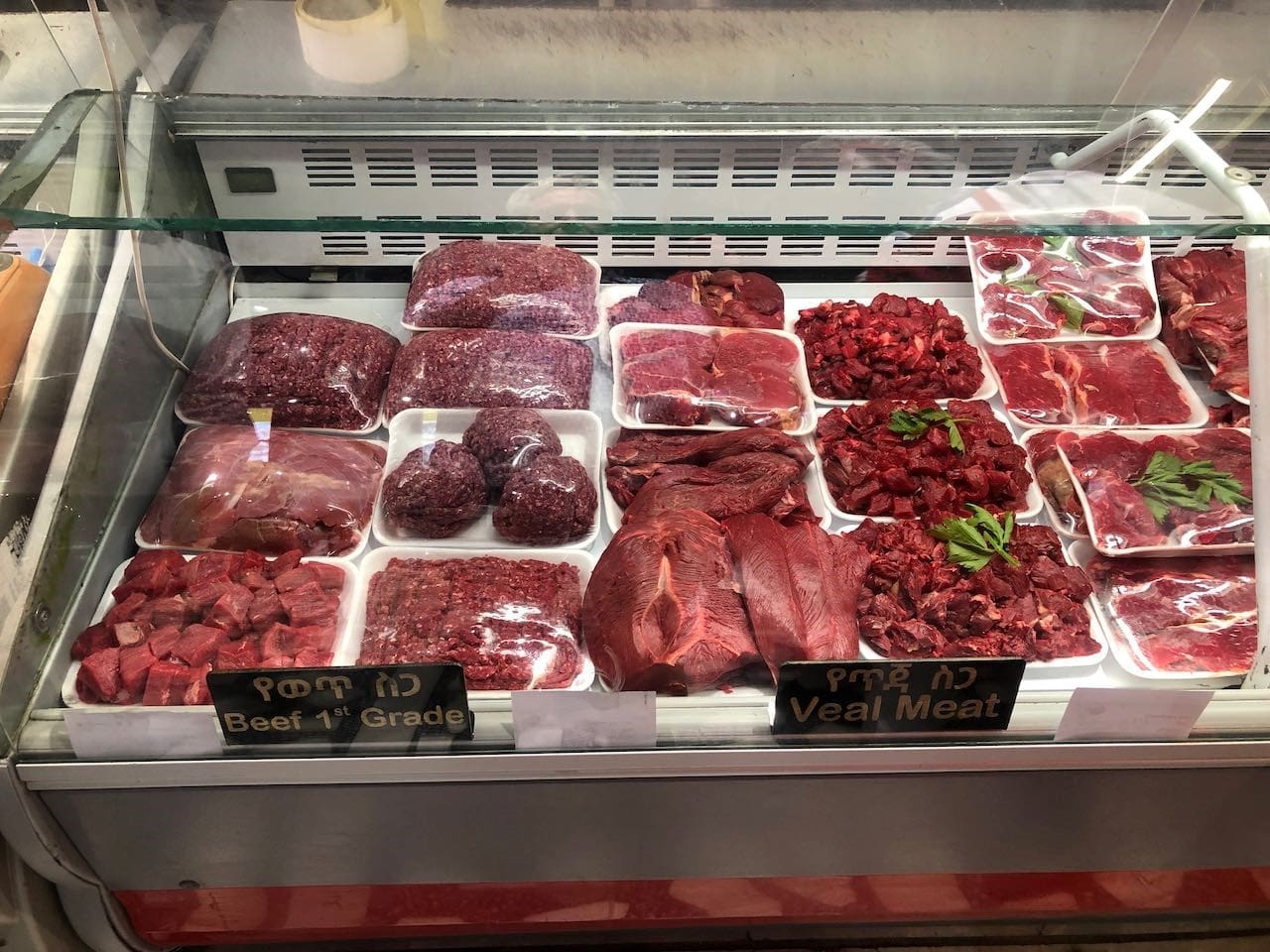
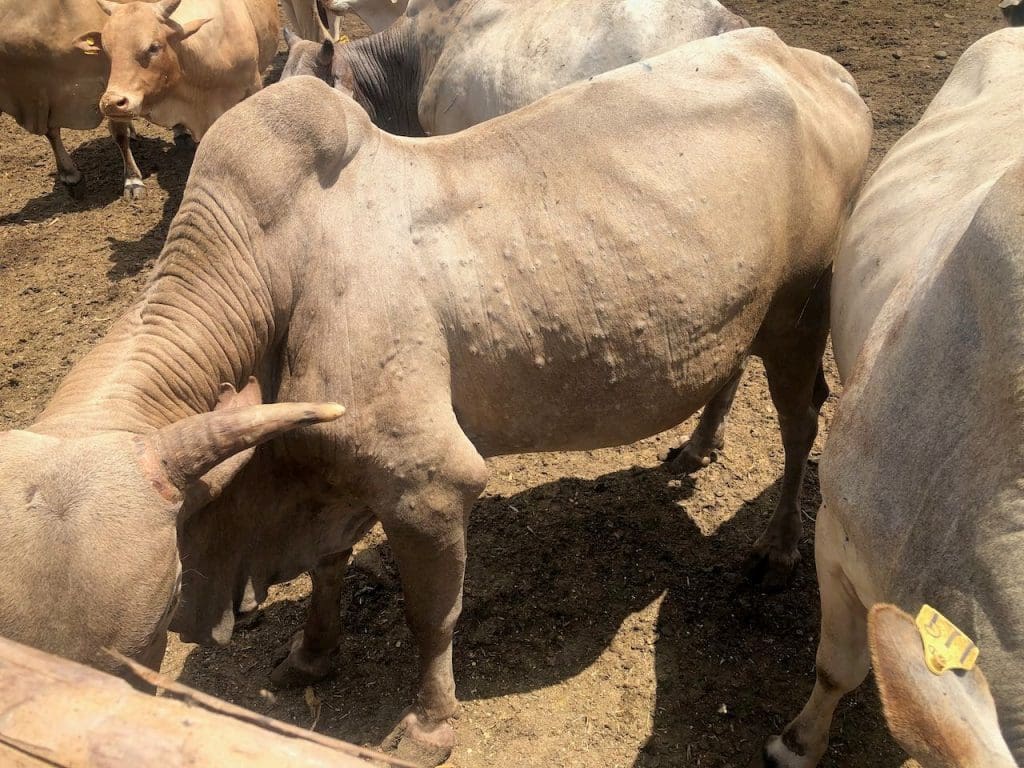
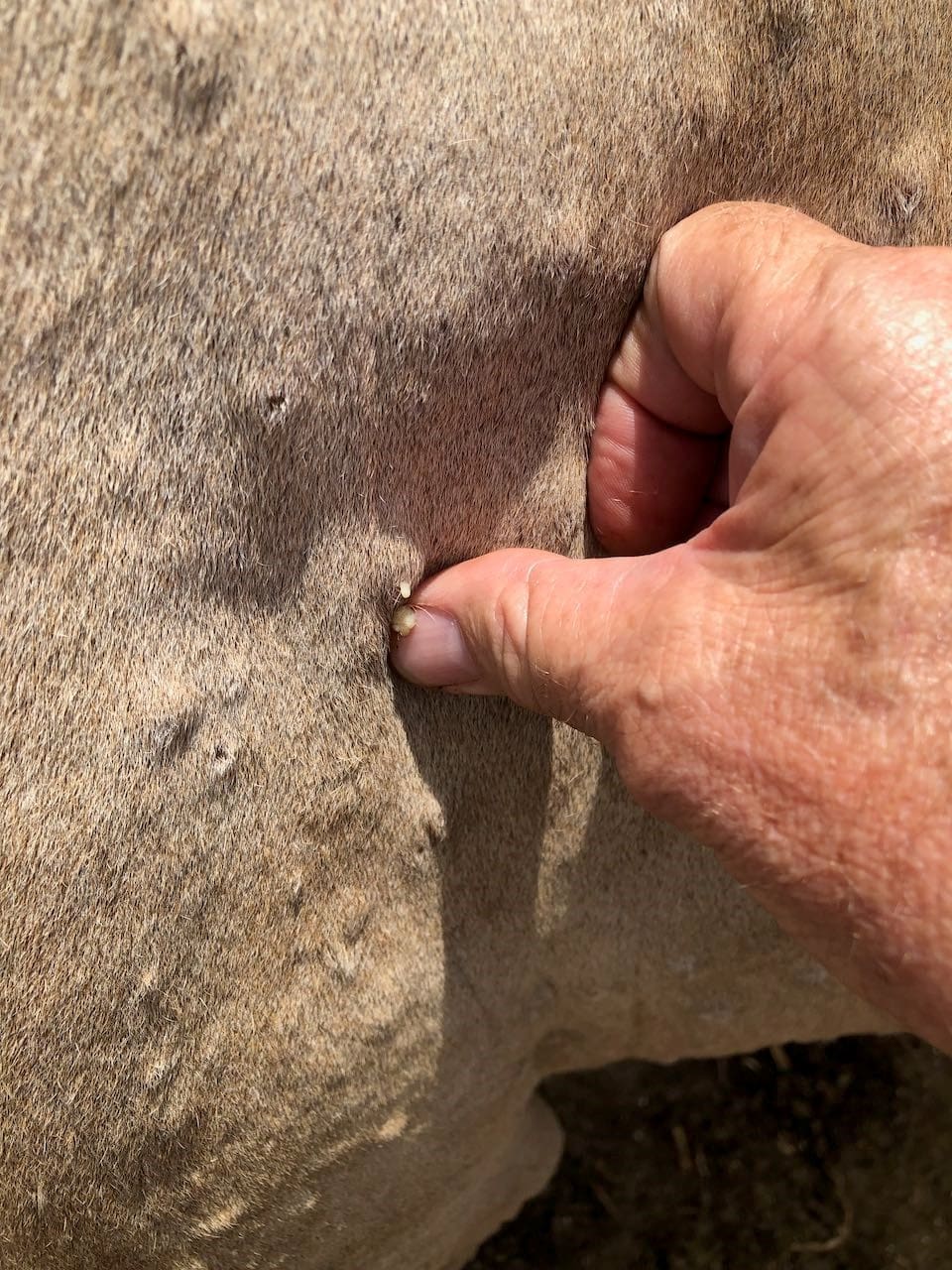
With Foot and Mouth just around the corner for Australia, not if, but when it arrives our exploding population of wild pigs are going to be one of the main sources spreading it.
There seems to be no real crisis forecast by anyone in our red meat industries.
There needs to be immidiate funding made available for major culling of these and other wild animals who will carry and spread this deadly diseas, and will go on to ruin our red meat industries.
What are we waiting for?
Tomorrow is too late.
Has there been any research into whether Kangaroos can be affected? If so, a real disaster is looming.
Thank you Ross. An informative report touching on many important subjects that required clarification.
I look forward to your next report to hopefully hear of the arrival of vaccines to start to get some control of both diseases, FMD & LSD.
Great Report Ross very informative. Thanks.
Thanks Ross – a very descriptive and informative report.
Let’s hope that Indonesia develops formal programs to contain both FMD and LSD to which Australia can substantively contribute
Top Stuff
Thank you. A very comprehensive report